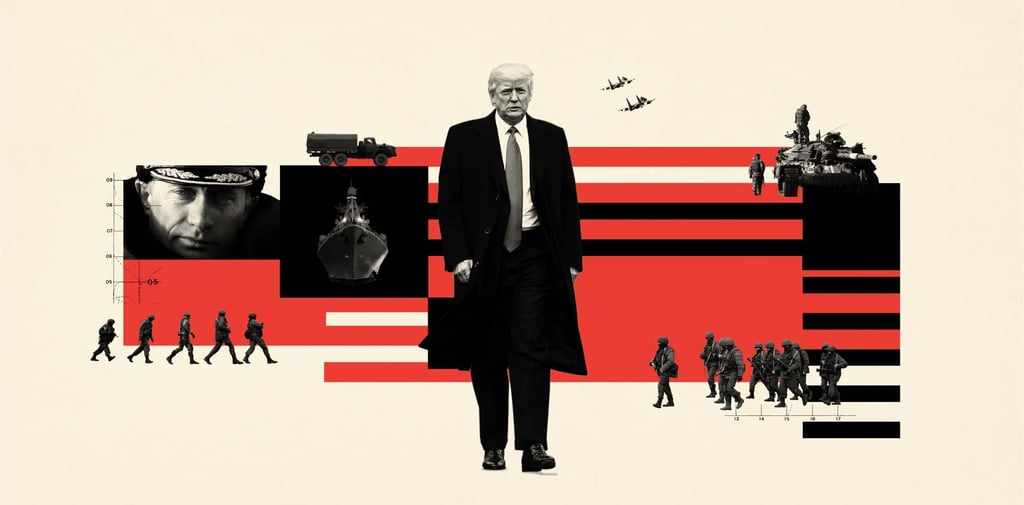New Cold War? It’s Already Here—And It’s Multipolar
The world isn’t headed for Cold War 2.0—it’s already in one. But this time, it's not bipolar. It's messy, global, and dangerously multipolar.
OPINION
Emmanuel Makome
5/9/20252 min read


For years, analysts warned of a “new Cold War” looming on the horizon. But it’s no longer on the horizon—it’s here. And unlike the 20th-century standoff between two superpowers, this new era of geopolitical tension is not defined by a clean East vs. West divide. It’s multipolar, unpredictable, and far more complex.
Today’s global standoff involves multiple major players: a revanchist Russia, an ambitious and economically dominant China, an emboldened Iran, and a fractured West struggling to maintain cohesion. These aren’t neatly drawn sides with proxy wars and iron curtains. Instead, they’re entangled in a web of conflicting interests, cyber warfare, trade dependencies, and asymmetric conflicts.
Russia and Ukraine: A Flashpoint, Not the Centerpiece
Russia’s invasion of Ukraine has become a defining feature of global tension, but it’s not the whole story. Moscow isn’t trying to restore the Soviet Union—it’s trying to dismantle Western dominance and establish its own regional sphere of influence, often in cooperation with nations like Iran and North Korea. The West responds with sanctions and arms shipments, but no clear red lines or strategies. It's a slow grind, not a world-ending standoff—yet.
China: Cold War by Other Means
Beijing isn’t interested in open military conflict, at least not yet. Instead, China is waging a Cold War in the realms of technology, trade, and ideology. The competition with the U.S. plays out in semiconductor bans, TikTok hearings, and diplomatic posturing over Taiwan. Yet China also retains economic interdependence with the West, complicating any Cold War-style narrative.
Iran: The Shadow Operator
Iran’s role in this multipolar standoff is less obvious but deeply impactful. From arming Russia with drones in Ukraine to supporting proxy militias in the Middle East, Tehran is a destabilizing force against the Western-led order. The recent Israel-Iran escalations show how quickly regional conflicts can spiral into broader geopolitical flashpoints, with global repercussions.
The Fractured West
Meanwhile, the “united West” isn’t so united. From intra-European disagreements on defense spending to American political polarization and an uncertain 2024 election, the cohesion that defined the original Cold War is faltering. Some NATO countries are wary of provoking China, others prioritize economic ties, and many fear a return of isolationist U.S. foreign policy under a second Trump term.
Conclusion: A Dangerous New Era
The world is not entering a Cold War—it’s enduring one. But it’s nothing like the past. This is a decentralized, multipolar struggle, with multiple regional conflicts and shifting alliances. There’s no Berlin Wall, but there are firewalls. There are no nuclear drills in schools, but there are daily cyberattacks on infrastructure.
We’re not watching the buildup to a Cold War. We’re living it. And the longer we pretend it's a simple U.S.-China or West-vs-Russia narrative, the less prepared we are for what’s really happening.
Photo: ILLUSTRATION BY CRISTIANA COUCEIRO /PHOTOGRAPHS: FROM LEFT TO RIGHT: VADIM GHIRDA / AP; LASKI DIFFUSION / GETTY; LEV FEDOSEYV / TASS / GETTY; BULENT DORUK / ANADOLU AGENCY / GETTY; DREW ANGERER / GETTY; SERGEI SAVOSTYANOV / TASS / GETTY; FILIPPO MONTEFORTE / AFT / GETTY; ALEKSEY FILIPPOV / AFP / GETTY
MORE NEWS
© 2025. Ke Press Global. A Ke Harbor Company. All rights reserved.
FOLLOW KE PRESS GLOBAL ON :
Contact us


